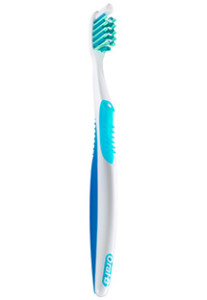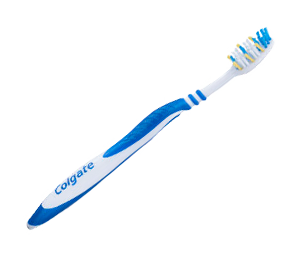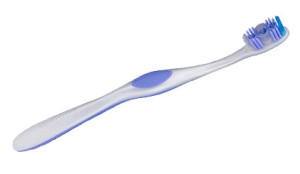Description- Object is between 6-9 inches and roughly 1-2 inches in circumference. Made of a hard plastic material. One end has a flattened section measuring 1-1.5 inches with stiff bristles of varying colors and lengths. The other end has a rubber substance on the “bottom” of the item. Has no discernible temperature difference than the ambient air temperature.
Deduction- Item looks to be a tool of some sort. Possibly used for vanity. Could be used for very focused cleaning i.e. tile grout, in tight corners or inside of small necked bottles. Could also be used for hygiene purposes.
Speculation- I could see this item used by male and female people of all ages. Brushing small sections of hair like eyebrows. I could see these individuals using this item to clean possibly teeth or under fingernails. Based on the location of the item i could see this item being used to clean in very tight areas. Like getting in the grout between tiles in the shower or on the floor. Could also clean the very tight locations on a toilet.
Questions-
Is there more than one use for this item?
Does the item need to be replaced often?
Has time and technology changed the usefulness or effectiveness of the item?
Colgate. “History Of Toothbrushes And Toothpastes.” History Of Toothbrushes And Toothpastes. N.p., n.d. Web. 22 Jan. 2016.
This article talks about the history of the toothbrush. The first toothbrushes date back to 3000 BC using frayed sticks. The Chinese are thought to have invented the first natural bristle design, with a bone or bamboo as the handle. This basic design didn’t change much until Du Pont invented nylon. The truly modern toothbrush was invented in 1938.
Wiegand, Annette and Burkhard, John and Eggmann, Florin and Attin, Thomas, “Brushing force of manual and sonic toothbrushes affects dental hard tissue abrasion,” Clinical Oral Investigations. Apr2013, Vol. 17 Issue 3, p815-822. 8p.
In this peer reviewed article, it has been found that if you are looking to do the least amount of damage to the enamel of your teeth, then you should use a electric sonic toothbrush. During the testing it was found that the most abrasive form of brushing is manually.



Nick,
Looks like we chose the same object! I found the most interesting/entertaining part of your post to be the speculation section. The Prown Analysis can be difficult to apply to objects that are so common to our everyday lives, but you did an excellent job coming up with creative ideas. I especially liked your theory that the toothbrush could be used to brush eyebrows.
Your speculation was funny and interesting. I think after reading your post that I may have missed the mark on mine a bit. It is nice being able to see other classmate’s work, because it helps me do better with mine in the future. Thanks for a great post.